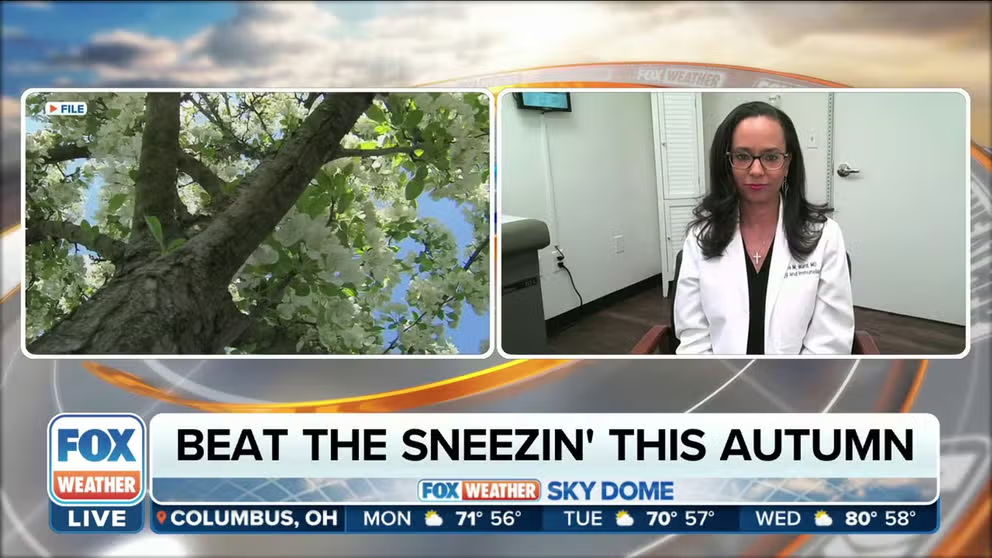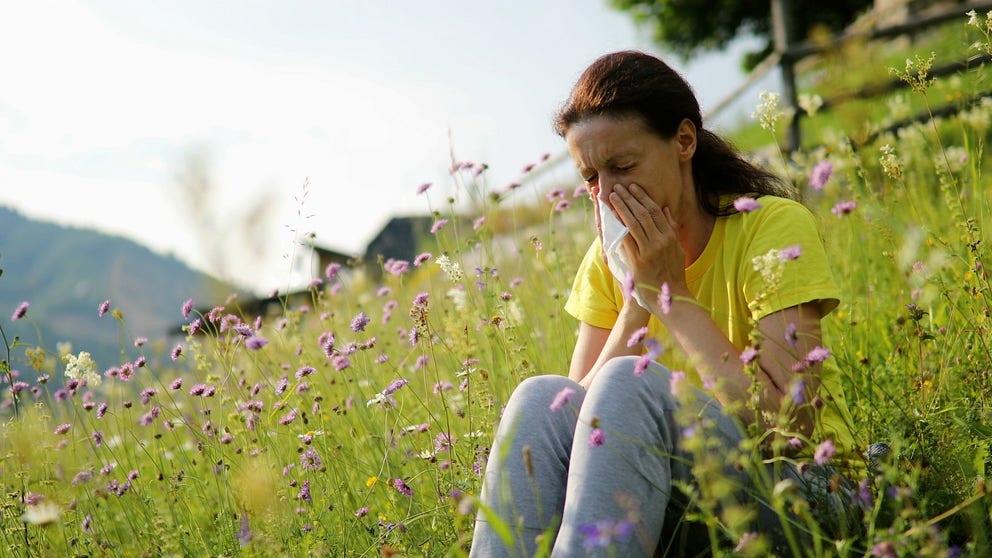Achoo! How you can manage sneezing, itchy eyes and other fall allergy symptoms
Ragweed and mold are the predominant autumn allergens.
Fall allergy season is upon us, symptoms to look out for
Allergist Dr. Carla Ward discusses what symptoms people should be looking out for as fall allergy season begins.
Fall is the time for changing leaves, corn mazes and pumpkin-themed everything. For many people, however, fall is also the time for allergies.
"When we think about fall allergy season, we think about ragweed pollen and mold counts," said Dr. Carla Ward, an allergist. "Unfortunately, our patients are already coming in, and they're already uncomfortable with symptoms."
According to Ward, some of those symptoms include itchy eyes, runny nose, stuffy nose, postnasal drainage and a bit of a cough.
Ragweed is the predominant fall allergen. Ward recommended that people sensitive to ragweed keep a close eye on pollen and allergen counts in their area and adjust their activities accordingly.
"On days that you see elevated counts, that's a day that you might want to pick an indoor activity or do something later in the day when the ragweed pollen has gone down," she said, noting that the Northeast experiences the "worst kind" of ragweed season.
HOW TO WATCH FOX WEATHER ON TV
While ragweed reigns supreme among fall allergens, mold can also be a culprit behind many fall allergy symptoms. Other allergens, such as dust mites and pet allergens that are present year-round, may also trigger allergy symptoms.
Why allergy season is getting worse each year
Pollen seasons are starting earlier and lasting longer.
Ward advised patients experiencing itchy eyes and runny noses to first use oral antihistamines to manage symptoms. She also recommended over-the-counter eyedrops to manage eye symptoms.
For patients experiencing nasal congestion, she recommends a nasal steroid, which decreases inflammation of the nose and the amount of mucus draining into the back of the throat.



